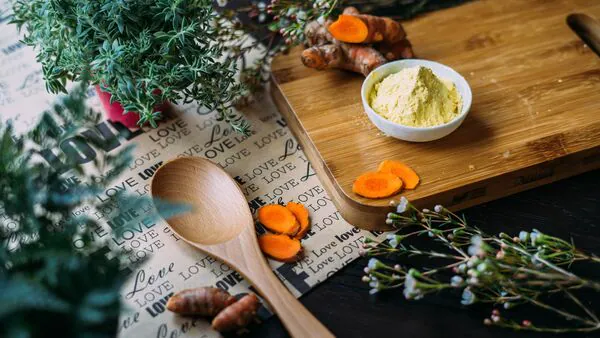
Is Your Traditional Medicine Safe? The Centre Plans Major Study.
NEW DELHI: The Centre plans to conduct a study to assess the microbial load in herbal materials used in traditional medicines, amid rising safety concerns clouding India's $70-billion herbal medicine market, said two government officials.
The study, set to be commissioned soon and completed four months after that, will aim to identify bacterial and fungal contamination in widely used herbs and establish microbial limits and testing standards to make herbal products safer, they added.
The plan follows the findings of an August 2025 study by the Indian Council of Medical Research's (ICMR) National Institute of Nutrition, revealing that 63.6% of 110 solid herbal formulation samples exceeded aerobic bacterial limits.
The study detected contamination by Staphylococcus, Pseudomonas, E. coli, yeast, and mould-microorganisms that can cause a range of infections, including food poisoning, skin and respiratory infections, and gastrointestinal illnesses.
Also Read | Yoga, Ayurveda, Ragas: How India can lead the global wisdom econEven national and international journals have reported detecting harmful pathogens such as E. coli, Salmonella, Pseudomonas aeruginosa, and Staphylococcus aureus in several herbal formulations available in the market.
The move also assumes significance as the country exported herbal and Ayush (ayurveda, yoga and naturopathy, unani, siddha, and homoeopathy) products worth $689.34 million in 2024-25 and $651.17 million the previous year, according to the commerce ministry's data.
Moreover, the Indian Ayush market is projected to grow $200 billion by 2030 from $40 billion in 2024. The segment is on track to achieve a valuation of $70 billion by the end of 2025, according to the commerce ministry's India Brand Equity Foundation (IBEF), a body established to promote the Made-in-India products study conducted on a single occasion does not necessarily indicate that something is wrong, Dr. V. M. Katoch, former director general of the ICMR, told Mint.
Also Read | A new 'Ayurveda Ahaara' category for FSSAI licence-food from ancient te“It should be seen as an alarm. If the same findings are consistently observed across different regions, then it becomes a matter of concern. Quality control orders are already in place for all drugs. The study should be conducted on a multicentric scale. If improvements are needed, they should be made scientifically and systematically. Involvement of the drug regulatory system in such studies and surveillance is essential," he said.
Queries emailed on Thursday to the consumer affairs ministry and the country's standards body, the Bureau of Indian Standards (BIS), remained unanswered until the publication of this article.
“The project has been initiated to ensure quality control and standardization in the growing traditional medicine sector, which remains largely unregulated in terms of microbial safety," said the first of the persons cited above, both of whom spoke on the condition of anonymity.
The study (titled Determination of Microbial Load in Herbal Materials Used in Traditional Medicine) will define safety benchmarks that can be incorporated into Indian standards and help establish validated test methods for microbial detection in herbal raw drugs, said the second official.
Under the project, microbial tests will be conducted on at least ten commonly used herbs in NABL-accredited or Ayush-approved laboratories with expertise in microbial analysis.
Also Read | Biodiversity norms set for revamp to boost ayurveda biz, conservatThe study will focus on detecting four key pathogens -E. coli, Salmonella, Pseudomonas aeruginosa, and Staphylococcus aureus-using validated test methods based on the country's official book of drug standards, Indian Pharmacopoeia, the World Health Organisation-prescribed good manufacturing practice (GMP) guidelines, and standards prescribed by the Ayush ministry's Pharmacopoeia Commission for Indian Medicine and Homoeopathy.
It will also analyze the import-export dynamics of herbal materials, identify contamination risks across supply chains, and assess how manufacturers handle microbial testing and quality assurance, according to the officials.
Safety vs over-regulationExperts warn that excessive microbial content can pose health risks, particularly to elderly and immunocompromised users.
“It's a good step by the government to improve the quality of ayurvedic drugs, as there have been instances where medicines manufactured for export markets are of good quality, while those meant for the domestic market are often of lower quality. That disparity would be eliminated if the study is conducted rigorously," said Dr. Rakesh Kotwal, medical officer (ayurveda) at Sub-District Hospital (SDH) Padder in the Kishtwar district of Jammu and Kashmir.
While practitioners have welcomed the move for its potential to improve quality, industry representatives caution against over-regulation.
“The study should not be conducted with the intention of treating these materials as medicines. Such materials should not be subject to the same regulations as pharmaceutical drugs. In the US, these are considered dietary supplements, not medicines, and applying strict medicinal regulations to them would not be appropriate," said Vachaspati Tripathi, managing director of Surya Pharmaceuticals, which exports traditional medicines, including to the US.
Anurag Sharma, chairman of the Ayush Export Promotion Council, was unavailable for comment.
Legal Disclaimer:
MENAFN provides the
information “as is” without warranty of any kind. We do not accept
any responsibility or liability for the accuracy, content, images,
videos, licenses, completeness, legality, or reliability of the information
contained in this article. If you have any complaints or copyright
issues related to this article, kindly contact the provider above.

















Comments
No comment